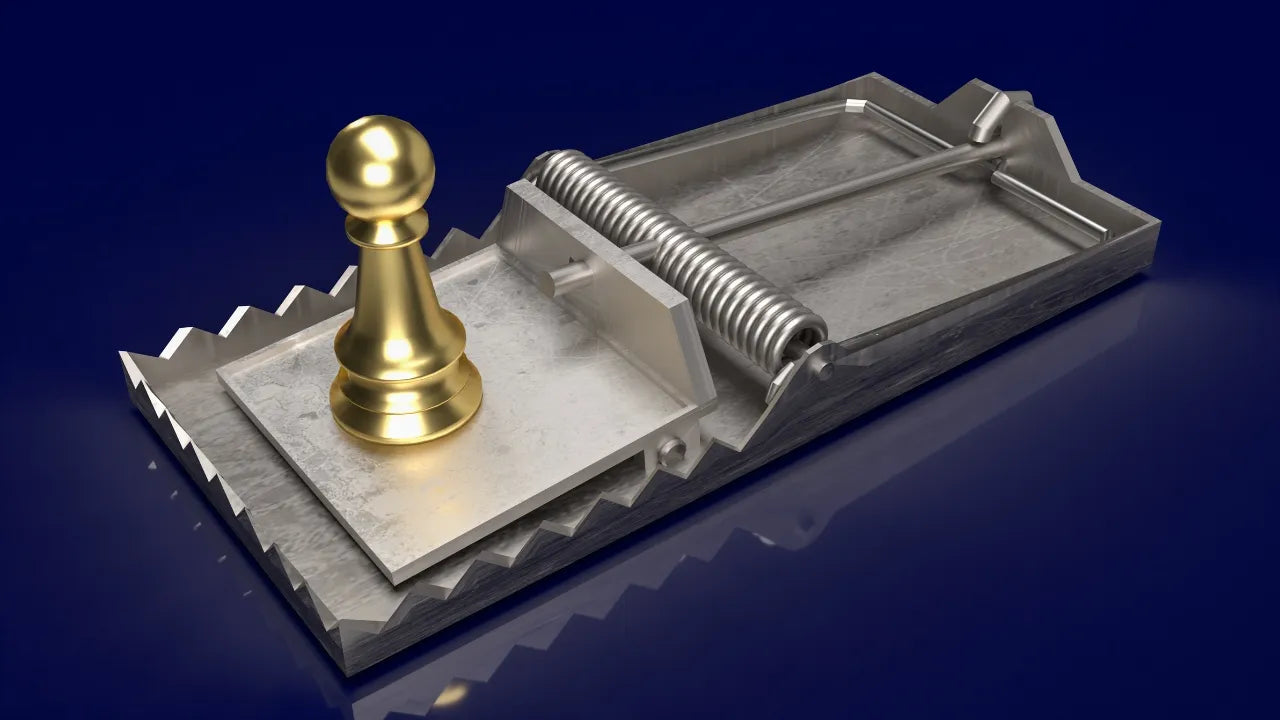What Are Chess Traps? Sneaky Strategies to Outsmart Your Opponent

Imagine you're deep into a chess game, confidently developing your pieces, and then—bam! Your queen is gone. Welcome to the mischievous world of chess traps.
What Are Chess Traps?
A chess trap is a tactical setup designed to lure an opponent into making a mistake. They might seem like dirty tricks, but they’re completely legit and often brilliant. Think of them as the Kevin McCallister of chess strategies—clever, calculated, and very satisfying when they work.

Traps usually involve:
-
Tempting a piece sacrifice
-
Hidden checkmates
-
Unexpected forks or pins
-
Psychological pressure ("No way they'd fall for that... right?")
Why Learn Chess Traps?

Whether you’re a grandmaster or someone who just found out bishops aren’t religious figures, learning traps can benefit your chess game:
-
Faster Wins: Some traps lead to quick victories in just a few moves.
-
Tactical Awareness: You'll recognize similar patterns in different games.
-
Defensive Skills: Knowing traps helps you avoid them!
-
Style Points: Let’s face it—springing a trap is just cool.
Famous Chess Traps
Here are a few traps that even seasoned players respect (and sometimes fear):
1. Fool’s Mate
The fastest checkmate possible—just 2 moves. Only works if your opponent forgets the basic rule: don’t play like a fool.
2. Scholar’s Mate
A 4-move checkmate targeting f7. Deadly at junior school tournaments. Easily parried, but great for learning early tactics.
3. Legal Trap
Sacrifice your queen only to deliver checkmate with minor pieces. Makes you feel like a wizard.
4. Noah’s Ark Trap
Get your opponent’s bishop trapped behind a wall of pawns. Named because they can’t escape—even in pairs.
5. Blackburne Shilling Gambit
A trap disguised as a gambit. Black offers a pawn; if White gets greedy, Black can fork their queen and king.
How to Spot or Set a Chess Trap

Warning signs you might be walking into a trap:
-
You're winning too easily
-
Opponent offers a free piece early
-
There's an eerie quiet before the tactical storm
To set one yourself:
-
Look for overconfident opponents
-
Bait pieces and plan 2-3 moves ahead
-
Study traps in common openings (Queen’s Gambit, Sicilian, Italian Game)
Are Chess Traps Cheap Tricks?
Some purists scoff at traps, calling them "tricks for amateurs." But the best traps are:
-
Sound: They don’t rely on your opponent being clueless.
-
Strategic: They fit into your larger game plan.
-
Fun: Chess should be enjoyable—why not add a little spice?
Even grandmasters like Gukesh Chess and Magnus Carlsen have fallen into traps or used them masterfully. It’s not about tricking someone—it’s about being prepared and sharp.
Where to Practice Chess Traps
Ready to set traps of your own? Here are some great platforms:
-
ChessDistrict: Offers chess lessons on tactics and traps
-
Chess courses on ChessDistrict
Study famous games. Practice online. Spring a trap or two. Just don’t get caught in one!


اترك تعليقا